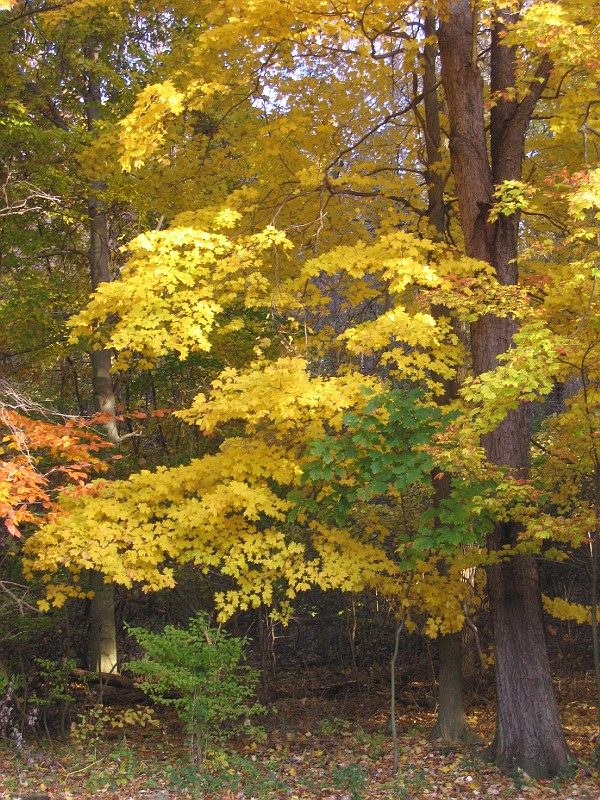Creating a Forest Garden
My forest in the fall The area you are looking at is the start of my forest garden, luckily for me I have this great canopy to work with. From there I had originally thought it was a matter of adding other vegetative layers to make this a successful garden space. How wrong I was about this. There are actually 5 distinct architectural features according to the folks at Edible Forest Gardens. From their site:
The area you are looking at is the start of my forest garden, luckily for me I have this great canopy to work with. From there I had originally thought it was a matter of adding other vegetative layers to make this a successful garden space. How wrong I was about this. There are actually 5 distinct architectural features according to the folks at Edible Forest Gardens. From their site:
- Soil horizon structure, vegetation patterning, vegetation density, and community diversity are also critical. All five of these elements of community architecture influence yields, plant health, pest and disease dynamics, maintenance requirements, and overall community character.
I don't even think I have ever referred to my former work as a forest garden. Maybe a vignette of nature, a recreation of nature . . . but never a forest garden. The thought of calling spaces (forest gardens) where the idea would be to develop that ecology just never occurred to me. Add to that this isn't something that comes up everyday in residential Landscape Design.
I was originally peaked on this subject by a article in the Columbian, about the forest garden in the Northwest U.S. and that's lead me on to further exploration.
The 1st site to go is Edible Forest Gardens, this is more than a site hawking a book, there is a lot of good info here to go through. I found a couple of other pdf's worth downloading one is from Cornell, and the other is from The Ohio State University (Go Bucks!); here's the pdf, and here's the fact sheet. which include a plant list that has a lot of info on a wide variety of plants that work in creating a forest garden.
I believe this is an important discussion for us Landscape Designers as we are faced with the continuing struggle of designing on former farmland, field, or forest that has been pillaged to make way for a subdivision. To try and create a sense of space that is warm and inviting with some enclosure. What better way to do that, than with trees.
With trees comes the opportunity to add other varied material, to create diversity, color, opportunity, wildlife, and tranquility . . . the forest garden. The trees are the beginning of the forest garden, a reclamation of former forest, and a gift to future inhabitants.
















2 comments:
Oo, I just blogged about this. Have you read the books? I'm debating whether to shell out the $55 for each...
I have not read the books; yet. I think I will read everything on the website and determine from there, whether or not I'll be reading them.
Post a Comment